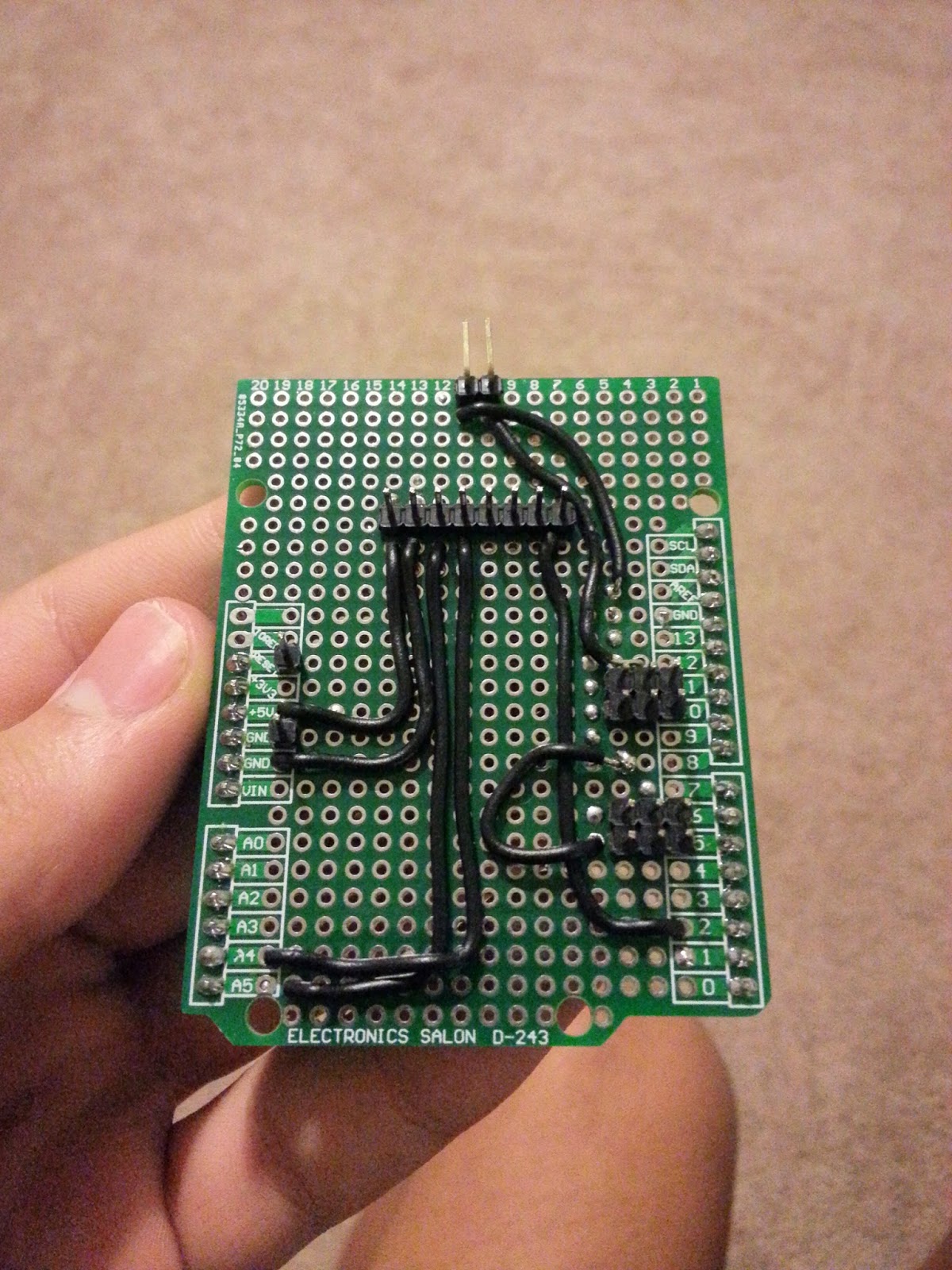Back in the beginning of September I had started work on taking a prototype shield (these) and soldering the circuits on the back using standard hook up wire and converting it into a guidance shield for easier demonstration purposes and to minimize the rats nest of loose wires hanging out all over the place. This increased the durability of the entire system but hit a major hardware snag when it did not work as it did on the breadboard. The issue was it started moving the servos a single tiny skip then shutting the whole system down. What was happening is that the servos were drawing far too much current for the 5V pin and the Arduino shut down to protect itself as it thought it was short circuiting, not an I2C bus issue as I first surmised. I figured it out at last earlier this week, when I used an additional power supply for the servos (lots of power required to move 4 of them simultaneously). This fixed the biggest hardware problems I was having with a minimal amount of changes required to my circuitry (will need only an additional regulator) and no major changes to the code (will be moving the servo pins to PWM next revision). When you encounter an issue, first thing to check is for shorts, then to see if something else has gone wrong such as a misplaced connection or a solderblob jumped terminal that should not be connected.
 |
| Shield top, not so great wire layout |
Learn from my mistakes and try not to repeat them when you are tinkering. Many thanks to Ross Lockwood for helping me edit this post and providing a lot of help on writing in general. There is a lot of work and planning going on behind the scenes in preparation for first drop test proof of concept flight and booster rocket design and construction. Expect a post with scans of my design and idea journal in terrible drawings. I also recently purchased a bit more gear from the ever-useful EBay, which will be detailed in the next post in addition to the new code and movement demo.

Shield base, terrible soldering job


Bonus mini board version base

Bonus mini board version top



No comments:
Post a Comment